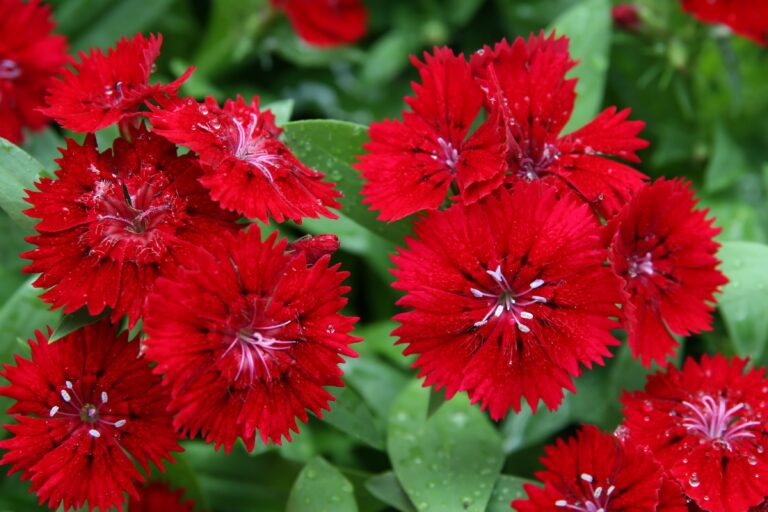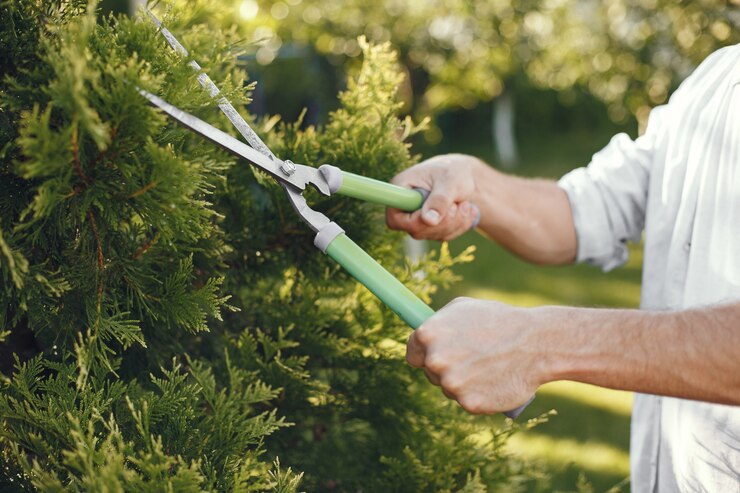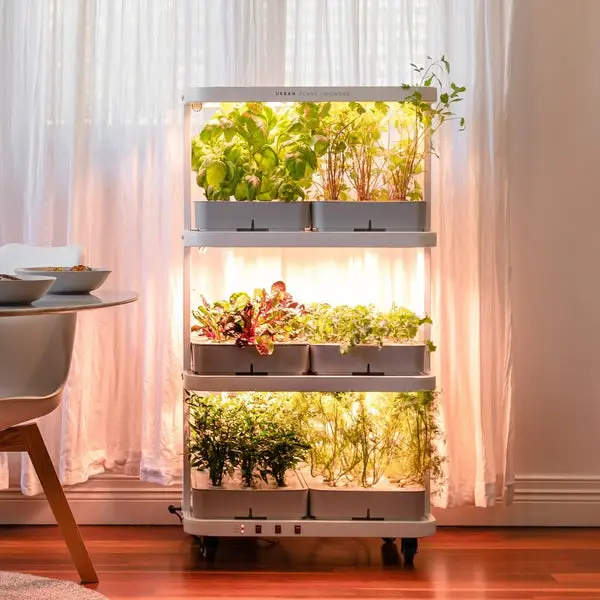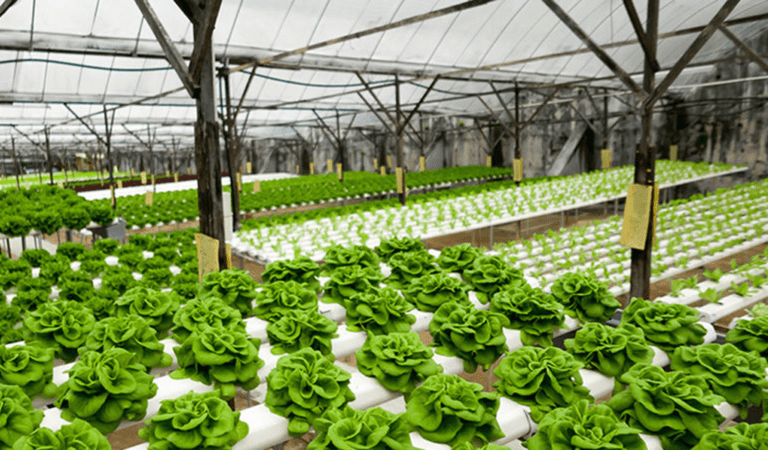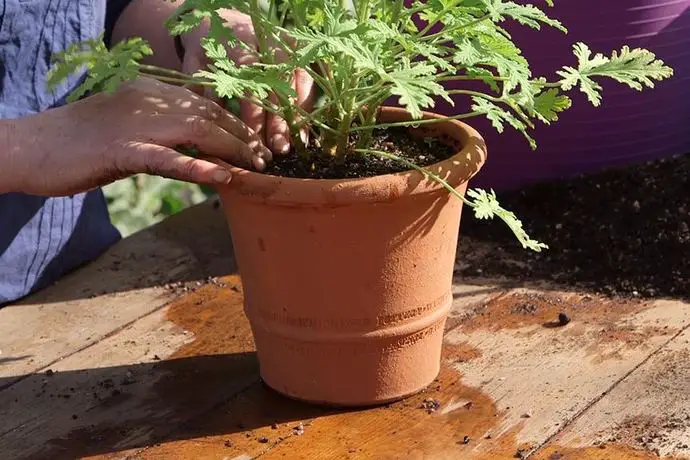Indoor Grow Room/Grow Tent Ventilation Setup Tips: How to Optimize Your Air Flow and Circulation
Table of Contents
Importance of proper ventilation in indoor grow rooms/grow tents
Proper ventilation is an essential factor in the success of indoor grow rooms and grow tents. It plays a crucial role in maintaining a healthy and productive environment for plants to thrive. Without adequate air circulation, various issues can arise, including poor plant growth, increased risk of pests and diseases, and decreased overall yield.

One of the main reasons why ventilation is important is to ensure a constant supply of fresh air to the plants. Plants need a continuous exchange of air to obtain carbon dioxide for photosynthesis and to release oxygen. In addition, proper ventilation helps to regulate temperature and humidity levels, preventing them from reaching extremes that can be detrimental to plant health. With the right airflow, plants can transpire efficiently, leading to better nutrient uptake and overall growth. Moreover, fresh air circulation helps to prevent the buildup of stagnant air pockets and mold growth, which can damage plants and create an unhealthy environment. Overall, a properly ventilated grow room or grow tent promotes optimal plant growth and provides a favorable environment for successful cultivation.
Understanding the basics of air flow and circulation in a grow room/grow tent
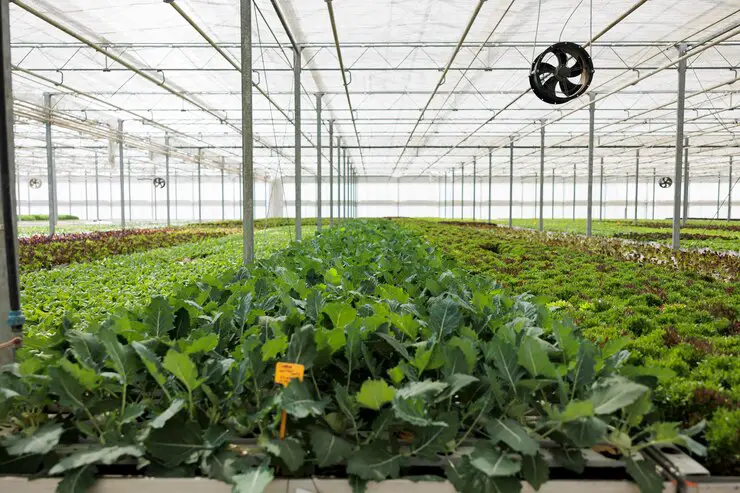
One of the key aspects of successful cultivation in a grow room or grow tent is understanding the basics of air flow and circulation. Proper air flow is crucial for maintaining a healthy growing environment and ensuring optimal plant growth and development. Without adequate air movement, plants can suffer from a range of issues such as mold growth, stagnant air pockets, and poor nutrient uptake.
Air flow in a grow room or grow tent is essential for several reasons. First, it helps to regulate the temperature and humidity levels, preventing them from reaching extreme levels that could harm the plants. Second, it ensures the distribution of fresh air and carbon dioxide, which are vital for photosynthesis and healthy growth. Lastly, proper air circulation helps to eliminate hotspots and cold zones, ensuring that all parts of the plants receive the necessary airflow and nutrients.
To achieve proper air flow and circulation, it is important to consider a few key factors. These include the size and layout of the grow room or tent, the placement of ventilation equipment such as fans and ducts, and the air exchange rate required for the specific plants being grown. By carefully assessing these factors and implementing the right ventilation system, gardeners can create an ideal environment for their plants to thrive.
Assessing the size and layout of your grow room/grow tent for optimal ventilation
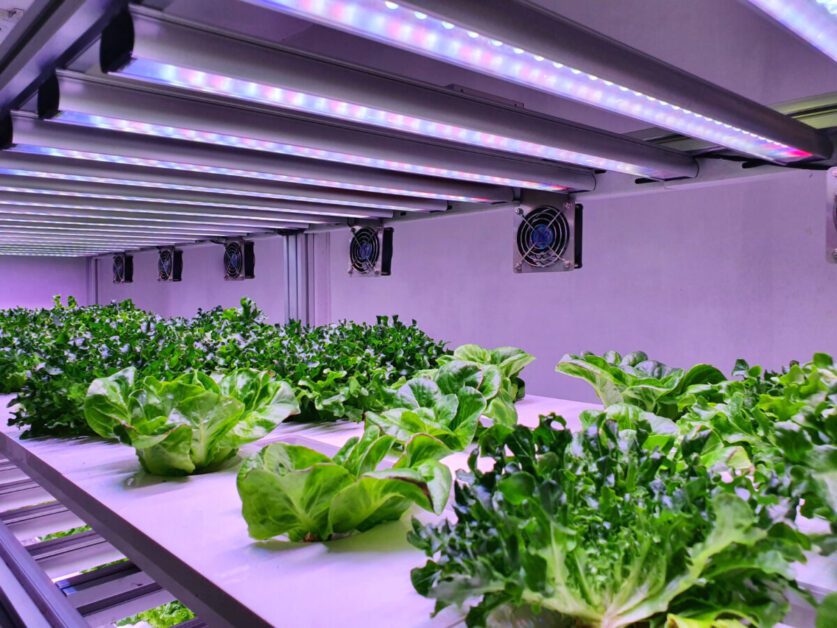
Assessing the size and layout of your grow room/grow tent is crucial in ensuring optimal ventilation for your indoor setup. Proper ventilation plays a vital role in creating a healthy environment for your plants by regulating temperature, humidity, and air quality. Before you begin setting up your ventilation system, take the time to carefully evaluate the dimensions and design of your grow room or grow tent.
First, consider the size of your space. A larger grow room or grow tent will require more powerful ventilation equipment to achieve adequate air exchange. This is because the volume of air in the room determines how quickly it can be refreshed. It is recommended to aim for at least one complete air exchange per minute in a grow room and up to three exchanges per minute in a grow tent. When calculating the required airflow, take into account the number of plants, their stage of growth, and the heat generated by lighting and other equipment.
Additionally, the layout of your grow room or tent can impact ventilation efficiency. Ideally, the arrangement should allow for even distribution of air throughout the entire space. Avoid overcrowding your plants, as this can impede airflow and create stagnant areas that are prone to mold and disease. Consider utilizing oscillating fans to promote air circulation and prevent pockets of stagnant air. By carefully assessing the size and layout of your indoor gardening space, you can optimize ventilation and create an environment that fosters healthy plant growth.
Choosing the right ventilation equipment for your indoor setup
When it comes to choosing the right ventilation equipment for your indoor setup, there are several factors to consider. First and foremost, you’ll want to assess the size and layout of your grow room or grow tent. This will help determine the specific airflow needs and the type of ventilation system that will work best for your space.
Next, it’s important to consider the amount of heat generated by your grow lights and other equipment. Proper ventilation is crucial for regulating temperature and preventing heat buildup, which can negatively impact plant growth. Look for ventilation equipment that has adequate airflow capacity and is capable of effectively removing excess heat from your indoor space.
Additionally, consider the noise level of the ventilation equipment. If you’re planning to have your grow room or grow tent in a residential area, you’ll want to choose fans and ducting that operate quietly to avoid disturbance. Noise reduction features, such as insulated ducting or inline fans with sound-dampening technology, can be beneficial in creating a more peaceful environment.
Lastly, be sure to choose ventilation equipment that is durable and of high quality. Investing in reliable equipment will ensure that your ventilation system operates efficiently and doesn’t require frequent replacement or repairs.
By carefully considering these factors, you can choose the right ventilation equipment for your indoor setup and create an optimal environment for your plants to thrive.
Proper placement and positioning of ventilation fans and ducts
Ventilation fans and ducts play a crucial role in maintaining proper air circulation and ensuring optimal conditions for plant growth in indoor grow rooms or grow tents. When it comes to the placement and positioning of these components, there are a few key factors to consider.
Firstly, it is important to strategically position the ventilation fans to achieve maximum airflow throughout the entire space. Placing fans at opposite ends of the grow room or tent will help create a cross breeze, effectively distributing fresh air and removing stale air. This will prevent the formation of hotspots and ensure uniform temperature and humidity levels.
In addition to fan placement, the positioning of ducts is equally vital. Ducts should be positioned in a way that allows for efficient air movement without any obstructions or bends that may restrict airflow. It is recommended to ensure that the diameter of the ducts matches the specifications of the fans to prevent any unnecessary resistance or pressure build-up. By following these best practices in the placement and positioning of ventilation fans and ducts, growers can optimize air circulation, which in turn promotes healthy plant development.
Here’s a guide outlining the proper placement and positioning of ventilation fans and ducts for optimal airflow in an indoor growing environment:
| Proper Placement and Positioning of Ventilation Fans and Ducts | Guidelines |
|---|---|
| 1. Exhaust Fans | – Install exhaust fans near the top of the grow space to expel hot, humid air and maintain proper temperature and humidity levels. |
| – Position exhaust fans opposite intake vents or windows to create a cross-ventilation effect and ensure continuous air exchange. | |
| 2. Intake Vents or Windows | – Place intake vents or windows near the bottom of the grow space to draw in fresh air from outside. |
| – Ensure intake vents are unobstructed to allow for efficient airflow into the grow area. | |
| 3. Oscillating Fans | – Position oscillating fans strategically to create gentle airflow across plants and prevent stagnant air pockets. |
| – Place fans at different heights and angles to ensure even distribution of air throughout the grow space. | |
| 4. Ducting | – Use ducting to connect exhaust fans to outside vents or windows for efficient air removal. |
| – Ensure ducting is securely attached and sealed to prevent air leaks and maintain negative air pressure within the grow space. | |
| 5. Inline Fans | – Install inline fans along ducting to increase airflow and maintain proper ventilation in larger grow spaces. |
| – Position inline fans closer to the exhaust end of the ducting to maximize air extraction efficiency. | |
| 6. Carbon Filters | – If using carbon filters for odor control, place them inline with exhaust fans to effectively remove odors before air is expelled outside. |
| – Ensure carbon filters are replaced regularly to maintain optimal odor control efficiency. |
Calculating the required air exchange rate for your grow room/grow tent
To ensure optimal growth and health of your plants in a grow room or grow tent, it is crucial to calculate the required air exchange rate. This rate determines how frequently the air within your indoor setup needs to be replaced with fresh air from the outside. The air exchange rate is influenced by various factors such as the size of the grow space, the number of plants, and the desired temperature and humidity levels.
To calculate the air exchange rate, you will need to determine the volume of your grow room or tent. This can be done by multiplying the length, width, and height of the space. For example, if your grow room measures 10 feet by 8 feet by 10 feet, the volume would be 800 cubic feet.
Next, you will need to determine the desired air exchange per minute (ACH) for your specific setup. This value depends on the type of plants you are growing, as different plants have varying air circulation requirements. As a general guideline, most indoor setups require an ACH of 4 to 8 for optimal growth. However, certain plants with higher transpiration rates may require higher ACH values.
Once you have determined the volume and desired ACH, you can calculate the required air flow rate by multiplying the volume by the ACH value. For example, a grow room with a volume of 800 cubic feet and a desired ACH of 6 would require an air flow rate of 4,800 cubic feet per hour (800 x 6 = 4,800).
Calculating the required air exchange rate is a crucial step in creating a successful indoor gardening environment. By ensuring that your plants receive an adequate supply of fresh air, you can promote their overall health and productivity.
Importance of using carbon filters for odor control in indoor setups
Carbon filters play a crucial role in controlling odor in indoor grow setups. As plants grow and flourish, they release various compounds and volatile organic compounds (VOCs) that contribute to strong and unpleasant smells. These odors can easily permeate the air within a confined space like a grow room or grow tent, causing discomfort and potentially attracting unwanted attention. By employing carbon filters, gardeners can effectively neutralize and eliminate these odors, creating a more pleasant and discreet environment for their plants.
Carbon filters work by utilizing activated carbon, a highly porous substance that has the ability to adsorb odor-causing molecules. When the air passes through the filter, the activated carbon traps and holds onto these molecules, effectively breaking them down and neutralizing the odor. This process, known as adsorption, ensures that the air leaving the filter is clean and free from any unwanted smells. For optimal performance, it is important to choose carbon filters that are appropriately sized for the grow room or grow tent, as well as regularly replacing the filter to maintain its effectiveness. By investing in carbon filters, growers can create an odor-free indoor environment that promotes healthy plant growth and provides peace of mind.
Ensuring proper sealing and insulation to prevent air leaks
Proper sealing and insulation are crucial factors in maintaining optimal air flow and preventing air leaks in indoor grow rooms or grow tents. Air leaks can lead to fluctuations in temperature and humidity, compromising the health and growth of your plants. To ensure effective sealing and insulation, it is important to pay attention to the following aspects:
Firstly, check for any gaps or openings in your grow room or tent. These can occur around doors, windows, vents, or any other points of entry or exit. Use weatherstripping or caulking to seal these gaps and prevent air leakage. Remember, even small leaks can have a significant impact on your indoor environment.
Secondly, insulation plays a vital role in maintaining a consistent temperature and avoiding the loss of heat or cool air. Consider using insulation materials such as reflective foils or insulating panels on the walls, ceiling, and floor of your grow room or tent. This will help create a more controlled and stable environment for your plants.
By taking the time to properly seal and insulate your indoor grow space, you can effectively prevent air leaks and create a stable environment that promotes healthy plant growth.
Maintaining the right temperature and humidity levels through ventilation
Maintaining the right temperature and humidity levels is crucial for the success of your indoor grow room or grow tent. Proper ventilation plays a key role in achieving these optimal conditions. By ensuring a continuous exchange of air, you can effectively regulate temperature and humidity levels, providing your plants with the ideal environment for growth.
Temperature control is essential for promoting healthy plant development and preventing heat stress or cold damage. Inadequate ventilation can lead to temperature fluctuations, which can have a detrimental impact on your plants. Through proper air circulation, you can distribute heat evenly and remove excess warm air, preventing hotspots and maintaining a consistent temperature throughout your growing space. This is particularly important when using artificial lighting systems that generate heat.
Humidity levels also greatly influence plant growth. Insufficient ventilation can result in stagnant air, leading to high humidity levels that encourage the growth of mold and mildew. On the other hand, inadequate humidity levels can cause plants to lose moisture too quickly, leading to dehydration and stunted growth. By adjusting the airflow and ensuring proper ventilation, you can maintain an optimal humidity range, promoting transpiration and nutrient uptake in your plants.
Managing air circulation to prevent stagnant air pockets and mold growth
To ensure healthy plant growth and prevent the development of stagnant air pockets and mold growth, proper air circulation management is crucial in indoor grow rooms and grow tents. Stagnant air pockets can lead to poor plant health, as well as the proliferation of mold and other harmful microorganisms. To effectively manage air circulation, there are several key considerations to keep in mind.
Firstly, it is essential to strategically place fans throughout the space to promote air movement. Positioning fans at different heights and angles helps to circulate air evenly and prevent stagnation in corners or low-lying areas. Additionally, using oscillating fans can further enhance air circulation by creating a gentle breeze throughout the entire grow area. By implementing these measures, you can minimize the chances of stagnant air pockets forming and inhibit mold growth.
Moreover, maintaining a consistent airflow pattern is paramount for preventing mold and other potential issues. This can be achieved by strategically placing intake and exhaust vents to facilitate a continuous exchange of fresh air. Intake vents should be positioned near the base of the grow area to allow cool air to enter, while exhaust vents should be situated near the top to remove warm and humid air. By maintaining a steady flow of fresh air, you can optimize plant health and minimize the risk of mold growth.
Understanding the role of exhaust fans and intake vents in ventilation setup
Exhaust fans and intake vents play a crucial role in the ventilation setup of indoor grow rooms and grow tents. These components work together to ensure a constant flow of fresh air while removing stale air and maintaining optimal conditions for plant growth.
Exhaust fans are responsible for expelling used air and excess heat from the space. They create negative pressure that allows fresh air to be drawn in through intake vents. By removing heat and humidity, exhaust fans help prevent the buildup of excessive moisture, which can lead to mold and other plant diseases.
On the other hand, intake vents bring in fresh air from outside the grow room or grow tent. This air is essential for replenishing carbon dioxide levels, which plants need for photosynthesis. Additionally, the fresh air helps maintain optimal temperature and humidity levels, providing a healthy environment for plants to thrive.
It is important to note that the size and placement of exhaust fans and intake vents should be carefully considered. Proper positioning ensures efficient air circulation and prevents stagnant air pockets. Additionally, balancing the airflow between the fans and vents is crucial to maintain the desired environment and avoid any disruption in plant growth.
By understanding the role of exhaust fans and intake vents in the ventilation setup, growers can create an environment where plants receive adequate fresh air and optimal conditions for healthy growth. The next section will delve into the considerations for proper placement and positioning of these ventilation components.
Regular cleaning and maintenance of ventilation equipment for optimal performance
To ensure the optimal performance of your ventilation equipment in your indoor grow room or grow tent, regular cleaning and maintenance are essential. Neglecting these tasks can lead to decreased efficiency, increased energy consumption, and potential issues with air quality.
Firstly, it is important to regularly clean the components of your ventilation system, including fans, filters, and ducts. Over time, dust, dirt, and debris can accumulate, obstructing airflow and reducing the effectiveness of the equipment. Use a soft brush or cloth to gently remove any buildup, taking care not to damage the delicate parts. Additionally, filters should be replaced or cleaned according to the manufacturer’s recommendations to maintain proper air purification and odor control.
In addition to cleaning, regular maintenance of your ventilation system is crucial. Inspect the equipment for any signs of wear or damage, such as loose connections, frayed wires, or malfunctioning parts. Promptly address these issues to prevent further damage and ensure the optimal functioning of the system. It is also a good practice to lubricate moving parts, such as fan motors, to reduce friction and extend their lifespan. Regularly monitoring the noise levels and airflow of your ventilation system can help detect any potential problems early on and allow for timely repairs or replacements.
Monitoring and adjusting ventilation settings based on plant growth stages
Monitoring and adjusting ventilation settings based on plant growth stages is crucial for maintaining optimal conditions in your indoor grow room or grow tent. As your plants progress through different growth stages, their ventilation needs may change, and it is important to stay attuned to these adjustments.
During the early vegetative stage, plants tend to have lower humidity requirements and benefit from increased air circulation to strengthen their stems and prevent dampness. This can be achieved by adjusting the ventilation settings to increase the rate of air exchange and ensure a steady flow of fresh air. As your plants transition into the flowering stage, their humidity requirements increase, and proper ventilation becomes even more critical to prevent the growth of mold or mildew. Adjusting the ventilation system to maintain a slightly higher humidity level while still ensuring adequate air circulation is essential for the growth and health of your flowering plants.
Monitoring the temperature within your indoor setup is also crucial, as different plant species thrive under different temperature conditions. It is important to adjust ventilation settings accordingly to maintain the ideal temperature range for your specific plants. A combination of exhaust fans and intake vents can help regulate the temperature, ensuring that cool, fresh air is constantly introduced, and warm air is efficiently removed.
By closely monitoring your plants’ growth stages and making necessary adjustments to the ventilation settings, you can create an environment that supports healthy, vigorous plant growth and maximizes yield potential.
Troubleshooting common ventilation issues and solutions
Ventilation is a crucial aspect of maintaining a healthy and productive indoor grow room or grow tent. However, issues with ventilation can sometimes arise, disrupting the optimal airflow and circulation within your setup. Understanding these common ventilation issues and their solutions can help you troubleshoot and address them effectively.
One common issue is poor air circulation, which can lead to stagnant air pockets and hinder plant growth. To resolve this problem, ensure that your exhaust fans and intake vents are properly positioned to promote a steady flow of fresh air throughout the space. Additionally, consider using oscillating fans to enhance air movement and prevent stagnant air pockets. Regularly clean and maintain your ventilation equipment to prevent dust buildup, which can obstruct airflow. By addressing these issues, you can promote a healthier environment for your plants and achieve better results in your indoor gardening endeavors.
Another issue that gardeners often encounter is excessive humidity levels. High humidity can promote the growth of mold and mildew, posing a threat to your plants. To combat this problem, consider installing dehumidifiers or using moisture-absorbing materials in your grow room or tent. Properly sealing and insulating your space can also prevent moisture from entering and accumulating. Monitoring the humidity levels with a hygrometer and adjusting ventilation settings accordingly can further aid in maintaining an optimal environment for your plants. By tackling humidity issues effectively, you can safeguard your plants from potential damage and ensure their healthy development.
Additional tips and considerations for maximizing air flow and circulation in indoor grow rooms/grow tents
To maximize air flow and circulation in indoor grow rooms and grow tents, there are several additional tips and considerations to keep in mind. Firstly, consider incorporating oscillating fans into your setup. These fans can help create a gentle breeze that mimics natural wind, promoting stronger stem growth and preventing stagnant air pockets. Place the fans strategically to ensure even coverage throughout the space.
Another important tip is to regularly clean and maintain your ventilation equipment. Dust and debris can accumulate on fan blades and filters, reducing their efficiency and potentially compromising air quality. Take the time to clean fans, replace filters, and inspect ductwork for any obstructions or leaks. Maintaining optimal functionality will ensure that air is properly circulating and any unpleasant odors are effectively filtered.
In addition, utilizing a reflector or reflective material on the walls of your grow room or tent can help enhance air flow and circulation. The reflective surface will help distribute light more evenly, reducing hot spots and improving overall plant health. Ensure that the reflective material used is durable and easy to clean as it may come into contact with moisture and nutrients.
By implementing these additional tips and considerations, you can maximize air flow and circulation in your indoor grow rooms and grow tents, creating an ideal environment for healthy plant growth.
Why is proper ventilation important in indoor grow rooms/grow tents?
Proper ventilation is crucial in indoor grow rooms/grow tents as it helps maintain optimal air flow and circulation, which is essential for the health and growth of plants. It prevents the buildup of heat, humidity, and carbon dioxide, while also preventing the growth of mold and other pathogens.
How do I understand the basics of air flow and circulation in a grow room/grow tent?
Understanding the basics of air flow and circulation involves knowing how air moves and how it can be directed throughout the space. This includes assessing the layout of the room/tent, identifying potential air flow obstructions, and strategically placing ventilation equipment to ensure proper air exchange.
How should I assess the size and layout of my grow room/grow tent for optimal ventilation?
To assess the size and layout, consider the volume of the space, the number of plants, and any potential obstacles that may restrict air movement. This will help determine the appropriate ventilation equipment needed to adequately circulate air throughout the room/tent.
What factors should I consider when choosing the right ventilation equipment for my indoor setup?
Factors to consider when choosing ventilation equipment include the size of your grow room/tent, the number of plants, the heat generated by your lighting system, and the desired air exchange rate. It’s important to select equipment with sufficient capacity, such as exhaust fans and intake vents, to ensure proper air flow.
How should I properly place and position ventilation fans and ducts?
Ventilation fans and ducts should be strategically placed to ensure efficient air circulation. Fans should be positioned to create a consistent airflow pattern, while ducts should be properly routed to minimize heat and pressure loss. It’s also crucial to avoid obstructions that could impede air movement.
How do I calculate the required air exchange rate for my grow room/grow tent?
The air exchange rate is calculated by determining the volume of the room/tent and multiplying it by the desired number of air exchanges per hour. For example, if you want six air exchanges per hour and your room/tent is 100 cubic feet, you would require a ventilation system capable of moving 600 cubic feet of air per hour.
Why is using carbon filters important for odor control in indoor setups?
Using carbon filters is crucial in indoor setups to control and eliminate odor. Carbon filters are effective in trapping odor-causing molecules, ensuring that the air expelled from the grow room/tent is odor-free. This is particularly important in settings where discretion is necessary.
How can I ensure proper sealing and insulation to prevent air leaks?
To prevent air leaks, it’s important to properly seal and insulate the grow room/tent. This involves sealing gaps and cracks, ensuring a tight fit for doors and windows, and insulating walls and floors. Proper sealing and insulation help maintain the desired temperature and humidity levels, and prevent uncontrolled air exchange.
How can I maintain the right temperature and humidity levels through ventilation?
Maintaining the right temperature and humidity levels can be achieved through proper ventilation. By adjusting the speed and timing of exhaust fans and intake vents, you can control the amount of fresh air coming in and the removal of stale air, allowing for temperature and humidity regulation.
How do I manage air circulation to prevent stagnant air pockets and mold growth?
To manage air circulation effectively, it’s important to place ventilation fans strategically to create a consistent airflow pattern throughout the grow room/tent. This helps prevent stagnant air pockets and reduces the risk of mold growth. Additionally, using oscillating fans can help ensure air movement reaches all areas of the plants.
What is the role of exhaust fans and intake vents in a ventilation setup?
Exhaust fans are responsible for removing stale air, heat, and humidity from the grow room/tent, while intake vents bring in fresh air. Both are essential components for maintaining proper air exchange, temperature, and humidity levels in the indoor setup.
Why is regular cleaning and maintenance of ventilation equipment important?
Regular cleaning and maintenance of ventilation equipment are important to ensure optimal performance. Dust, debris, and plant matter can accumulate on fans, ducts, and filters, reducing their effectiveness. Regular cleaning and maintenance prevent clogs and ensure efficient air flow.
How should ventilation settings be monitored and adjusted based on plant growth stages?
Ventilation settings should be regularly monitored and adjusted based on the specific needs of plants at different growth stages. For example, during the vegetative stage, plants may require higher humidity levels, while the flowering stage may require adjustments for temperature control. Regular observations and adjustments are key.
What are some common ventilation issues and their solutions?
Common ventilation issues include inadequate air exchange, improper temperature regulation, and excessive humidity. Solutions may involve upgrading ventilation equipment, adjusting fan speeds or timers, using dehumidifiers or humidifiers, and ensuring proper air circulation by eliminating obstructions.
What are some additional tips and considerations for maximizing air flow and circulation in indoor grow rooms/grow tents?
Additional tips include using reflective materials to maximize light distribution, employing proper air filtration to reduce dust and pests, avoiding overcrowding of plants to ensure adequate air movement, and periodically reassessing and optimizing ventilation systems as plants grow and environmental conditions change.


